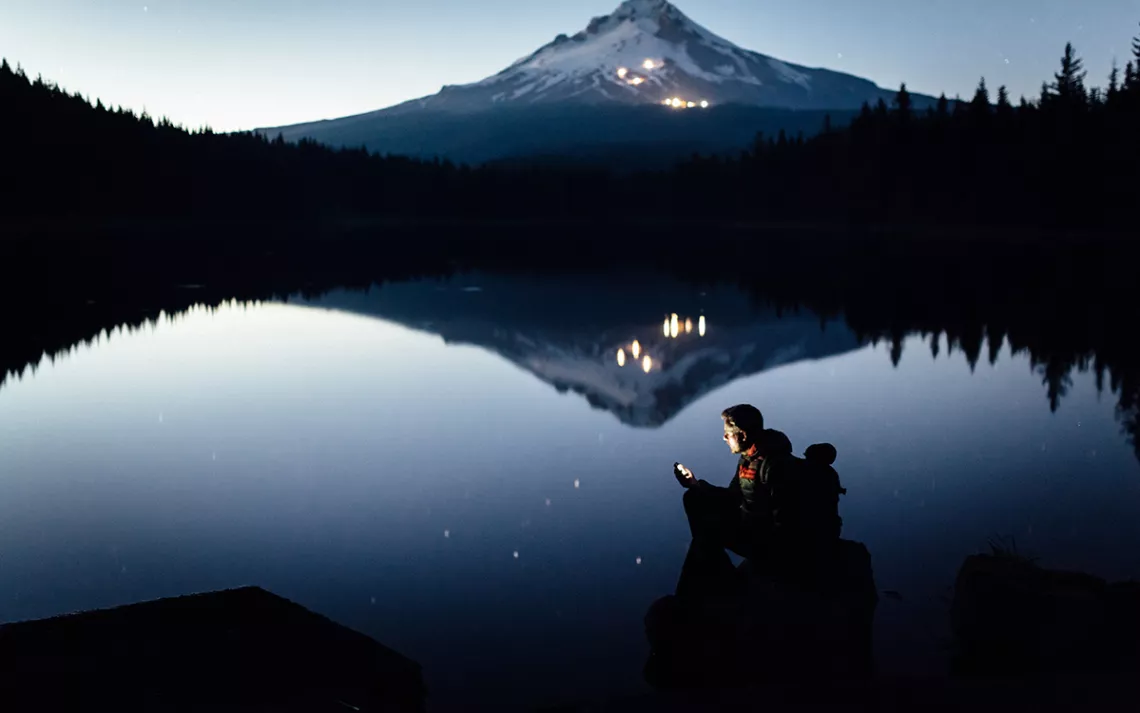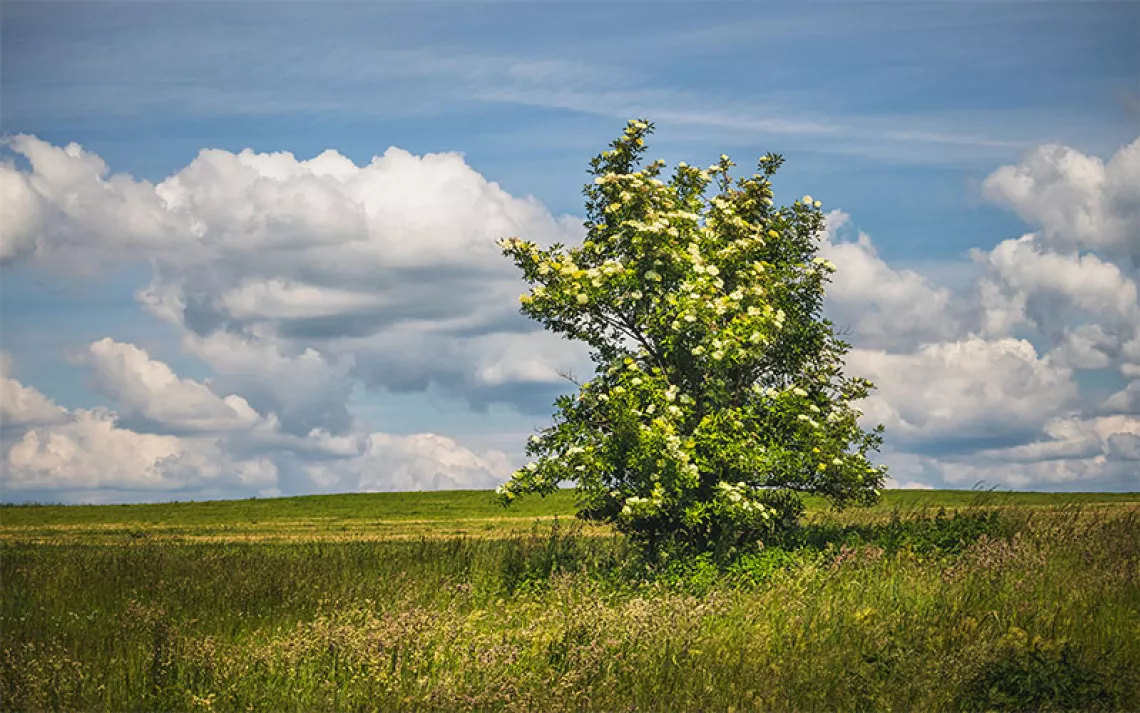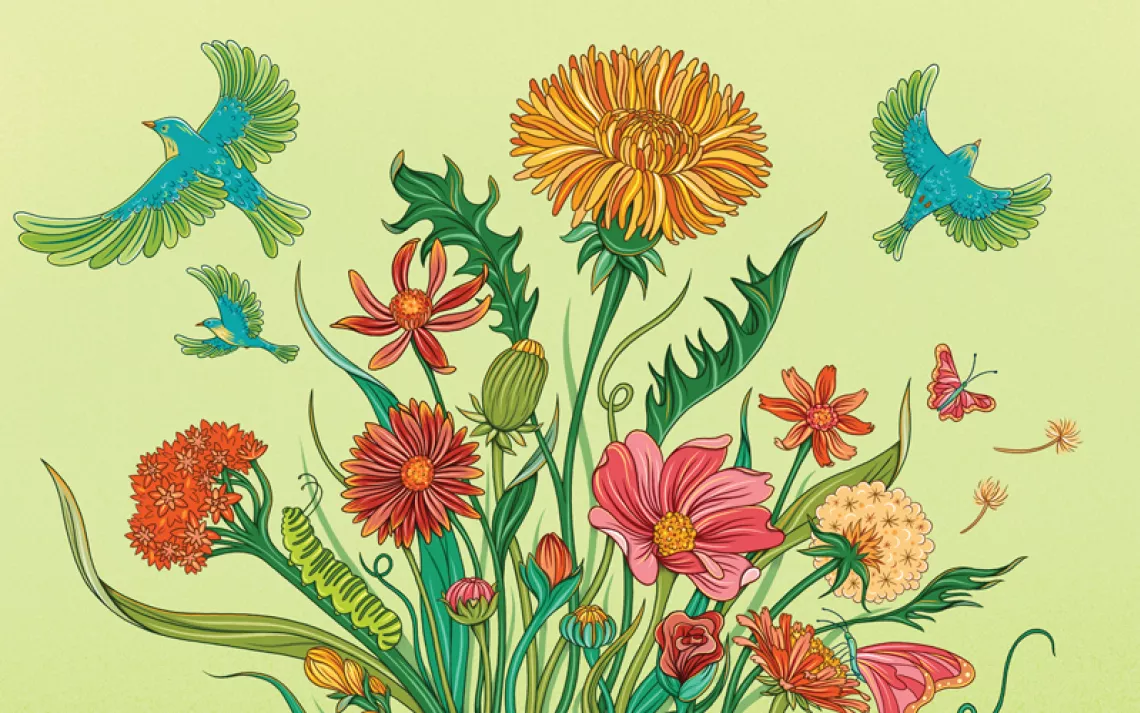Time to Rethink Nature Apps?
Let’s encourage real ways of knowing nature, not smartphone dependence, in the outdoors

Photo by deimagine/iStock
The opinions expressed here are solely those of the writer and do not necessarily reflect the official position of the Sierra Club.
So much can be done so easily on a smartphone nowadays that they are difficult to put down for very long. One of the best ways to remind yourself that humans can function without a smartphone is to get out into the backcountry. There in the wild, you pare down your needs to the basics. You must carry your gear, watch the weather, find water, and set up shelter. You tune in, if only temporarily, to nature’s language and eloquence, its pace and rhythm. You also gain an external vantage point from which to critically evaluate the high-tech world we live in. Richard Louv, whose 2006 bestseller No Child Left Inside launched a nationwide movement to reconnect kids with the outdoors, put it this way in 2011: “The more high-tech our lives become, the more nature we need.”
Since these words were written, the high-tech saturation of lived experience has only worsened, and Louv’s prescribed antidote—getting into nature—has become yet another occasion to whip out a high-tech device. By way of example, consider the now-ubiquitous nature apps.
There are a variety of popular outdoor-navigation apps. There are also apps that can identify plants, trees, birds, animal tracks, rocks and minerals, and constellations. A smartphone can thus be a complete field guide, along with built-in camera, video, magnifying glass, and GPS. You can even upload observations and measurements onto a global environmental database and become a citizen scientist.
“A plant expert at your fingertips,” says one plant identification app. “Identify plants, flowers, cacti, succulents, and mushrooms in seconds with the click of a button on your mobile device.” Hiking navigation apps allow you to “navigate like a pro” and “explore with confidence.”
Of course, humans have always extended our self-sufficiency and power through technology, ever since we harnessed fire. We use technology to connect with nature too. Hiking boots, tents, and sleeping bags are obvious examples. But although humans have always relied on our tools, we’ve also relied on our own skills, resourcefulness, ingenuity, perceptiveness, patience, discipline, alertness, memory, and intelligence, quite independently of any tools. Some tools call upon or enhance those skills and attributes; others less so. It’s important to ask, as media theorist Neil Postman did, “not only what a new technology can do but also what it can undo.”
If nature apps fulfill our curiosity about the surrounding natural environment and give us good information about it, that would seem to be a good thing. But do nature apps at the same time “undo” anything important about the way humans understand and relate to the natural world? They very well might. With a plant identification app, you do not have to closely examine the plant and ask questions, as you do with an old-fashioned guidebook. Is it a grass, a sedge, a rush, or a fern? Do the leaves have pointed tips and finely scalloped margins, or are they oval and round-toothed? Am I near a stream bank? With GPS, there is no need for continuous confirming and checking of surrounding topographical features as there is with a paper map and compass. There is less need to gauge, assess, and estimate. Is this the second or third stream crossing? Is that the same pinnacle I saw three miles back?
What nature apps might undo are ways of knowing nature that are based on observation, experience, and skill. In fact, that is the whole point of most nature apps: The user can get answers without having to do much. We gain knowledge from a screen, not directly from the things themselves. Diverse ways of knowing nature shrink down to one.
*
The contrast between richer and more impoverished ways of knowing nature can be illustrated by the difference between the ancient Polynesian oral tradition of non-instrument navigation and using a GPS device.
In 1973, a surfer turned anthropologist from Southern California named Ben Finney and Hawaiian artist-historian Herb Kane sought to prove that the scattered and far-flung islands of the Pacific, including Hawai'i, had been explored and inhabited intentionally, rather than accidentally, as was previously assumed. But they needed a Polynesian who could navigate a sea canoe without navigational instruments. They eventually found one—a 41-year-old man on the Carolinian atoll of Satawal named Mau Piailug, who bore the honorific title of Master Navigator. Mau was one of the last individuals on Earth who had been trained in the ancient oral tradition of non-instrument navigation, a tradition that had been harshly suppressed by Western colonialism.
In 1976, Piailug was able to guide Finney and 13 other crewmembers roughly 2,500 miles from Hawai'i to Tahiti without the aid of compass, sextant, or navigational equipment of any kind. The voyage took 31 days. The theory of “accidental drift” was thrown into doubt, and the successful voyage sparked renewed interest in ancient wayfinding and pride in Polynesian culture.
How did Piailug do it? According to those who knew him, it was “like magic.” Piailug had spent years memorizing elaborate mental compasses of stars, swells, and winds that he learned from his grandfather. Complex information about geography and location was embedded in and retrieved through stories, chants, and dances. He was also an expert in reading the physical signs of seas, skies, and stars. Natural signs included water temperature, color, and salinity; cloud type, color, and movement; wind direction, speed, and temperature; swell type and direction; reefs, floating plant material; and birds. He also had knowledge of boat speed, current set, and leeway. With this information, Piailug was able to dead reckon across the Pacific Ocean over enormous distances, in sun or cloud. Junior Coleman, a Hawaiian who sailed with Piailug, referred to him as the Yoda of the Pacific.
The obvious question is, why not just break out the GPS?
In the documentary film Papa Mau: The Wayfinder, Hawaiian Nainoa Thompson, a later student of Piailug’s, suggests that GPS is only about “the journey of getting from point A to point B.” Tellingly, he says, “Voyaging is important because it is hard.” He equates GPS with “getting a young child’s mind to only look at a little box that defines their world and disconnects them from nature, from culture, from heritage.” For Thompson, the rigorous demands of non-instrument navigation connect him to his Hawaiian roots, a culture characterized by close attunement to sea and stars. Those connections are the real journey. “Our ancestors valued navigation as a source of pride,” Piailug explains. “Mau,” his nickname, means “power.”
A GPS is a mere means. It helps you get from point A to point B. But because there is little need to read and understand the surrounding environment, there is less learning and problem solving involved. Very little skill is called upon or developed. There is no real accumulation of geographic experience and wisdom through persistent practice, little expansion of consciousness through heightened, multi-sensory awareness.
Most of us will not become non-instrument master navigators anytime soon; there is no shame in using a GPS device in the backcountry. We may hypothesize, however, that people connect to nature more deeply when they learn directly from natural signs and things. “Listening in wild places, we are audience to conversations that are not our own,” writes Indigenous botanist Robin Kimmerer (Potawatomi), author of Braiding Sweetgrass. “There are teachers all around us.”
*
There is much discussion these days about how we should “balance” technology and nature. Typically, however, such discussions don’t generate compelling arguments for why a smartphone is needed when in the outdoors. It is more often assumed that because the smartphone is omnipresent, we should therefore give it the best role it can play, rather like appeasing a demanding child who won’t take no for an answer. Other technologies used outdoors are not justified with such begging-the-question circularity.
Numerous articles that celebrate how high-tech can connect kids to nature invariably begin with the observation that kids today spend too little time in nature and too much time indoors addicted to screens. The supposed solution? Take the screens outside. “Knowing what we do about kids and screen time,” says Backwoodsmama.com, “we might balk at the idea of letting our kids use technology in nature. However, when used right, technology can actually encourage children and youth to get outside, engage with nature, and have fun too!” A “key question” for Scott Sampson, the executive director of the California Academy of Sciences and author of How to Raise a Wild Child, is “how to embrace nature and technology, given our penchant for digital obsessions. . . . We will also need to leverage those electronic screens to get kids (and adults) connected to nature.”
Perhaps. But one can learn to botanize and navigate without a smartphone. And analog technologies such as paper maps, compasses, and guidebooks pose no risk of importing compulsive or distractive high-tech habits into the outdoors. (According to new research from the Human Screenome Project at Stanford University, people switch between screen content in “short, fragmented bursts” of 10 to 20 seconds, on average, during up to 300 smartphone sessions per day.) One can also learn nature lore from a knowledgeable human naturalist, as humans have for thousands of years. And to the extent that one’s health and safety or life depends on information, one is better off learning it and mastering it, rather than outsourcing it to an electronic device that could lose power, fail, break, or slip into a creek.
Smartphones are ubiquitous; for many of us, they have become unavoidable. But that does not mean we must endlessly pander to high-tech habits and welcome smartphones into every conceivable human context. Rather than ask how smartphones can engage people with nature, we should be asking how nature can disengage people from smartphones.
Before we teach kids how cool nature apps can be, we could teach them how cool it is to rely on their own outdoor resourcefulness, perceptiveness, memory, and wonder. They would thus learn self-sufficiency rather than tech dependency. They would gain skills and practical experience. They would connect with long traditions of nature-based learning and would be rewarded by deeper, wider, and richer ways of knowing nature than what a screen can provide.
Ask not what a smartphone can do for you in the outdoors—but what you can do in the outdoors without a smartphone. You’ll very well end up learning what the unmediated outdoors can do for you.
 The Magazine of The Sierra Club
The Magazine of The Sierra Club



